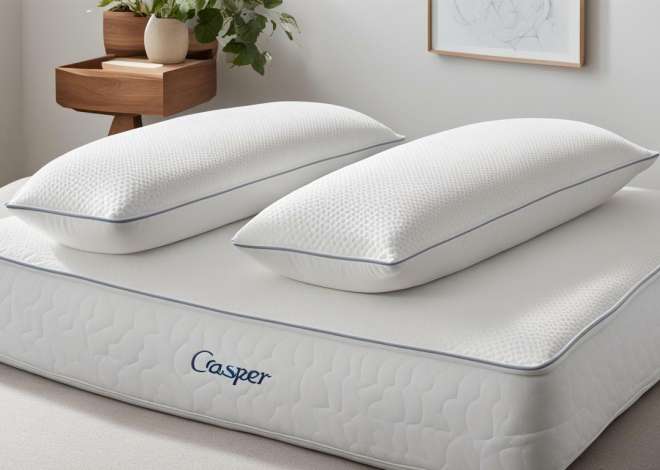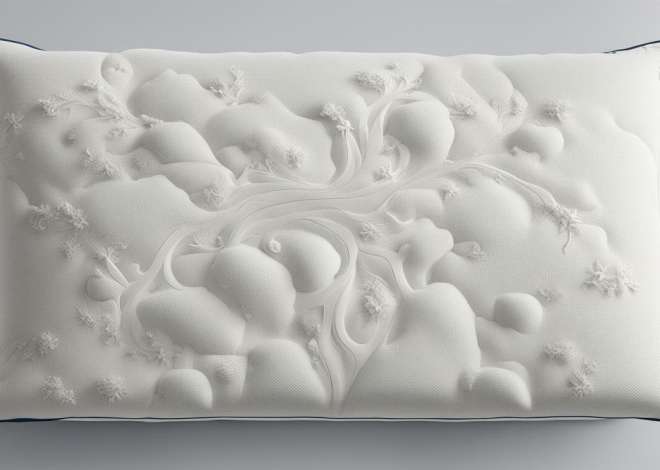
Satin vs Microfiber Pillowcases for Hair Damage Prevention
Do you wake up every morning only to find that your hair has become virtually unmanageable overnight? The reason could be your pillowcase. While many people may not realize it, the type of material their pillowcase is made of can have a significant impact on the health of their hair, particularly when it comes to preventing damage. In this article, we’ll explore the key differences between two popular pillowcase materials – satin and microfiber – and how they can help you maintain healthy, luscious locks.
Understanding the Importance of Choosing the Right Pillowcase Material for Hair Health
Before we delve into the specifics of satin and microfiber pillowcases, let’s talk about why choosing the right pillowcase material is so important for your hair health. When you sleep, your hair naturally rubs against your pillowcase, which can cause friction and damage to individual strands. Cotton and other rough materials can exacerbate this effect, leading to frizz, split ends, and breakage. Pillowcases made of softer, silkier materials, on the other hand, create less friction and can help protect your hair.
In addition to protecting your hair from damage, choosing the right pillowcase material can also help maintain your hairstyle. If you spend time and effort styling your hair, you want it to look good for as long as possible. Sleeping on a pillowcase that creates less friction can help prevent your hair from getting tangled and flattened overnight, which means you can wake up with your hairstyle still intact. So, not only is choosing the right pillowcase material important for the health of your hair, but it can also help you maintain your desired look.
The Science Behind Hair Damage Caused by Sleeping on Cotton Pillowcases
If you’re using cotton pillowcases, you may be unwittingly causing damage to your hair while you sleep. The microscopic fibers within cotton can, over time, cause damage and breakage to hair strands. Even worse, these fibers can also get tangled in your hair, leading to further damage and exacerbating issues like frizz and split ends. The more you use cotton pillowcases, the more significant the damage will become, and potentially, the faster your hair will become frail and prone to breakage.
How Satin Pillowcases Benefit Hair Health: A Detailed Analysis
Satin pillowcases are much softer than cotton ones and, as such, create less friction when you toss and turn in your sleep, sparing your hair from damage. Satin pillowcases are made from materials that have a much finer texture than cotton. Therefore, you will go to bed, and over time, wake up to less frizz, fewer tangles, and softer, shinier, healthier hair.
Microfiber Pillowcases vs Satin Pillowcases: Which is Better for Hair Damage Prevention?
Microfiber pillowcases are often touted as a great alternative to satin pillowcases. Like satin, microfiber is a soft, smooth material that can reduce hair damage caused by friction while you sleep. However, while microfiber has some benefits, it pales in comparison to the advantages of satin. The material used to make microfiber can be more abrasive than satin, meaning it can strip natural oils from hair strands, making hair brittle and prone to damage.
Factors to Consider When Choosing a Satin or Microfiber Pillowcase for Your Hair Type
When deciding to switch to satin or microfiber pillowcases, it’s essential to consider your hair type. Thick, coarsely-textured hair may respond better to pillowcases with a more significant slip factor, such as satin. In contrast, thinner, frizz-prone hair may be better supported by a smoother, silkier material like microfiber. However, by and large, the benefits of satin pillowcases will outshine those of microfiber for most hair types.
Tips for Maintaining Healthy Hair While Sleeping
Choosing the right pillowcase can go a long way toward protecting hair while you sleep. However, there are additional steps you can take to maintain your hair’s overall health while sleeping. For instance, try combing out any tangles before sleeping to reduce the risk of breakage, or tie hair up to protect length when it is especially long. Experts also recommend sleeping with freshly washed hair, as oils and product buildup can result in more significant damage.
Common Misconceptions About Hair Care While Sleeping
Despite the importance of using the right pillowcase and taking further measures to protect your hair while sleeping, there are several common misconceptions about how to maintain hair health at night. For example, many people believe that sleeping with wet hair can be beneficial, but it’s actually counterproductive, as hair strands are more fragile when wet. Additionally, using a hair bonnet can provide an extra layer of protection, but it isn’t as effective as switching to a satin pillowcase entirely.
How to Choose the Best Satin or Microfiber Pillowcase for Your Budget
Switching to a satin or microfiber pillowcase is a relatively low-cost solution to hair damage prevention. However, some pillowcases on the market can be quite expensive. Choosing the right pillowcase for your budget involves weighing various factors, such as overall quality, durability, and brand reputation. Ultimately, you want to select a pillowcase that will last you through many nights of restful, damage-free sleep.
Real-Life Experiences and Testimonials from Those Who Have Switched to Satin or Microfiber Pillowcases
If you’re still on the fence about switching to a satin or microfiber pillowcase, consider looking into first-hand accounts from those who have made the switch. Many people swear by the benefits of satin pillowcases, claiming that they’ve seen a significant reduction in hair damage, frizz, and breakage since making the switch. Similarly, microfiber pillowcases enthusiasts claim that they have similarly seen improvements. There is, however, definitely a higher proportion of individuals that have had better experiences with satin.
Conclusion
When it comes to preventing hair damage while sleeping, switching to a satin or microfiber pillowcase can be a game-changer. By making the transition, you can minimize friction on your hair, reduce breakage, and achieve shinier, healthier hair overall. While both materials have some benefits, satin pillowcases rise above in terms of its gentle texture and lack of damage. Don’t let rough cotton pillowcases continue to damage your hair – make the switch to satin today.


